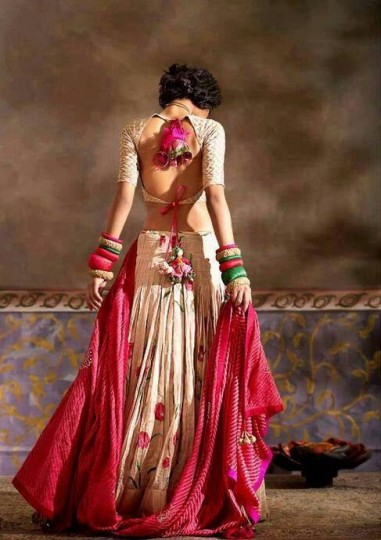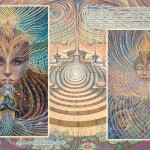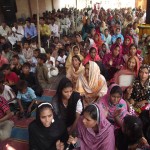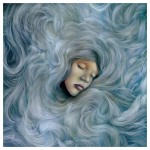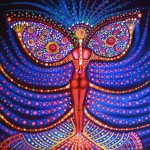THE GODDESS MOVEMENT: A GLOBAL AWAKENING. WHO REPRESENTS GODDESS? WHAT RACE, WHAT COUNTRY? EAST, WEST, DARK, LIGHT?
With Respect,
Bairavee, Daughter of Kali
This is a massive awakening, with multiple geographic epicenters arising in tandem. Political changes in Africa and the rising of female leadership, the energizing of public discourse on sexual attitudes and the ‘causal’ attitudes of rape in India, women’s voices emerging from the Middle East – point to this being something that is happening across the globe. Clearly, the awakening is spreading like wildfire in the West, and that is something to be cherished and celebrated in its own right – but that does not make the West it’s epicenter.
On more than one site, I have seen casual references to how this Re-Awakening is a ‘Western’ (read: Caucasian or North American/European) phenomenon and that women from those regions will lead the way for others. When I hear or read about how the West will re-ignite the Goddess movement, I feel dismayed and to me history begins to echo once more.
- WHO REPRESENTS GODDESS? WHAT RACE, WHAT COUNTRY? EAST, WEST, DARK, LIGHT?
- MOTHER IS GOD ON EARTH
- Visions from God
- WHO REPRESENTS GODDESS? WHAT RACE, WHAT COUNTRY? EAST, WEST, DARK, LIGHT?
- WHO REPRESENTS GODDESS? WHAT RACE, WHAT COUNTRY? EAST, WEST, DARK, LIGHT?
- WHO REPRESENTS GODDESS? WHAT RACE, WHAT COUNTRY? EAST, WEST, DARK, LIGHT?
- WHO REPRESENTS GODDESS? WHAT RACE, WHAT COUNTRY? EAST, WEST, DARK, LIGHT?
I immediately recall the patronizing discourse of ‘educating the natives’ that arose with the earliest proselytizing attempts in Africa and Asia. I recall how the modus operandi of repressive, colonial regimes (in India for example) was to alleviate the suffering of the oppressed women there, who needed freeing from the shackles of their own religions and customs. That led to the codification of a multiplicity of Indian traditions, and in one single blow outlawed certain controversial customs, but also de-legitimized the many practices of peoples of the so-called ‘lower’ castes who had far more fluid attitudes towards marriage and sexuality. (A step backwards, you could say). Many other examples from the history of colonialism and the ideological machine that legitimated it provide so many examples of the same.
When we look to history, we see that any teleological (different from theological) explanation or description given to mass movements has almost inevitably reflected entrenched power hierarchies. In the narrative that I see arising, the West is (once again) the center of the globe – this time with its women, rather than its men, bringing Enlightenment for the Globe. And I find this a mistake that we can avoid, with some circumspection, critical thought and consideration.
Many of the compassionate, awakening, men and women I have on my site are Caucasian, and some of the most evolved spiritual individuals and teachers I know are Caucasian. So I have no issues there, no reason to argue why Western men and women cannot or should not be a part of this movement. What I find problematic is when a particular racial and/or geographic group begin to be uncritically hailed as ‘leaders’ for others to follow.
When we make such categories, when we draw the spiritual geography of this Earth with a particular location of the globe as its center, we make the same kinds of boundaries, hierarchies and power relations which so many of us on the Goddess Path rejected so heavily when it appeared through the institution of patriarchy. Let us avoid making the same judgments when so many of us seek equality and a leveling of the playing field.
We are at a critical time now where our movement has begun to amass enough energy that it stands at the brink of divergence, fragmentation, consolidation – or some other process. We get to choose to avoid the errors of the past, we get to choose to not have to re-learn the lessons of history – just as so many of us are beginning to see the need for herstory or even, ourstory.
For some who might think this to be a ‘trivial’ point, it is important to bear in mind that discourse – the way we talk about things – reflects, very powerfully, the way we think about things. When we privilege any one race or region as being the focus, we (whether we do so consciously, or unconsciously) relegate other centers to a peripheral focus. This was the thrust of the ideological machine used to justify colonialism and bringing ‘God to the natives’. This is the reason why the World Map we all know makes Africa smaller than it is and exaggerates the size of the United Kingdom.
And on top of everything else – for those of you who integrate an understanding of the Earth’s kundalini (The Serpent of Light) and its rising in December 2012, the epicenter of that awakening took place in the Andean Mountains of Peru. Ironically, it is in ‘the West’, but not part of what most people mean when they use that term. Their teachings are sifting further and further into collective consciousness, but few ever consider this sacred site to be the ‘center’ of the awakening – and frankly, one does not have to!
This is a movement, as I understand it, for all, for men and women from North, South, East, West. It is a moment where we get to equalize, where we get to right the wrongs of the past, or at the very least, to create a new balance that celebrates plural perspectives and provides multiple centers.
Unfortunately – and feel free to disagree with this if this is not your perspective, as a Priestess of Colour and a scholar of politics and history, I find that a lot of Western discourse and attitudes towards the spiritual traditions that have found center-stage in the ‘New Age’ movement are far too reminiscent of the ideology and attitudes of Orientalist scholars studying the ‘exotic’ other. So many traditions are being appropriated and given new life, which is a wonderful thing, but they are being done so in ways that do not always look at the reality of the people who live in the contemporary regions those spiritual teachings emanate from.
The spiritual teachings that so much of the New Age subscribes to very often co-exist paradoxically with oppressive, unequal realities for women in other parts of the globe. The beauty of Goddesses and the words that describe them in scripture fly across Facebook walls, but with few reflections on how a land that produced such prose can still kill its daughters and view them as burdens. Very often, these traditions become romanticized in themselves, and the critical question of – Well, why didn’t it work before? Why didn’t it empower the women of the land to rise? is completely missed.
And to me, that is a critical question, that is a key opportunity for us to engage with traditions of the past and identify new pathways for change. We may need to revisit or revamp these traditions that have on the one hand elevated female metaphysical energies, but barred its daughters from real positions of power – be it in politics, or even in the right to hold spiritual office … or even to enter a temple during their menstrual period, if only to open their Heart to The Divine. Whilst honoring traditions are important, idealizing them to the point that the key questions – of what didn’t work? what needs reworking? – needs to be equally addressed. And to this effect, the local knowledge and awakening that is happening concurrently in different global epicenters needs to be honored, integrated and seen as a valuable part of the Goddess Movement.
In the name of respecting ‘ancient traditions of the East/South’, let us not uncritically mouth the same ideology that somehow kept the women of those lands suppressed/oppressed.
Let me give you a concrete example: I have seen a rise in artistic and photographic imagery of the Goddess Kali/Durga as a Caucasian woman. (nothing wrong with that). But as a movement, little consideration is given to the message that imparts to women (from India) who are considered to be too ‘low’ to ever think of themselves as Goddesses. Have you ever seen a Laxmi with Dark Skin? Or one that wasn’t flawless? Ironically, at an anti-rape protest event that I participated in, I saw Indian women carrying placards that said that ‘we don’t need to be goddesses, just treat us as people’. Coming from the land of a million goddesses, this is a powerful statement.
What do we do with those messages? And why are they valued less, or sub-consciously perhaps, integrated less in the mainstream of this movement? We have so much to learn from the fierce self-assertion in the West (in this example) and the desire to assert oneself/be counted outside of the context of religion as expressed by Indian women. But until we see both ‘ways of knowing’ as equal, each side is bound to repeat the painful mistakes of the other. ..Food for thought…
In closing:
Daughters and Sons of the Mother, wherever you are, whatever the colour of your skin may be – now is the time to Rise. Together, we are all — at the Center.
With Respect,
Bairavee, Daughter of Kali
